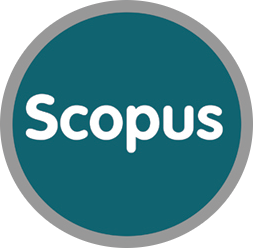Дизайн, синтез та біологічні властивості комплексів С60 фулерену з лактатами деяких металів
DOI: https://doi.org/10.15407/hftp10.03.302
Анотація
Пошук нових матеріалів на основі вуглецевих структур, таких як фулерени, відкриває перспективи їх застосування у різних прикладних галузях, у тому числі й медицині. Саме тому дизайн супрамолекулярних комплексів на основі С60 та природної молекули молочної кислоти (та її похідних) є необхідним початковим кроком для передбачення термодинамічних і кінетичних можливостей синтезу надмолекулярних структур та їх фізико-хімічного характеризування. Створення водної форми нанокомплексів та їх in vivo тестування є завершальним етапом цього дослідження.
У результаті дизайну з використанням методу молекулярної механіки ММ+, напівемпіричного квантово-хімічного РМ3 методу та методу Monte-Carlo знайдено, що система «С60–лактат» є доволі стійкою за підвищеної температури (до ~ 550 K), що забезпечує надійність і стабільність перебігу процесу синтезу комплексів за звичайних для цієї процедури умов. Синтезовано та виділено лактати магнію, кальцію, стронцію, цинку та барію. Доведено їх будову ІЧ-спектроскопією та рентгеноструктурним аналізом. Ультразвуковою диспергацією отримано водорозчинні нанокомплекси С60 з лактатами вказаних металів та УФ-спектроскопією доведено їх структури.
Сукупні in vivo результати механокінетичних досліджень втоми м’язів фізичним навантаженням при введенні нанокомплекса С60–лактат вказують на підвищену здатність функціонування скелетних м’язів та зменшення часу, необхідного для її відновлення. Встановлено виражений захисний ефект вказаних нанокомплексів на скорочувальну динаміку ішемічної травми камбалоподібного м’яза. Показано, що внутрішньом’язові ін’єкції окремих компонентів та нанокомплекса демонструють виражений захисний ефект, пов’язаний з генерацією максимальної силової відповіді, викликаної підвищенням рівня м’язової втоми. І, нарешті, доведено захисну роль водорозчинних похідних C60 за нейродегенерації та значне збільшення толерантності нервової тканини до гіпоксії, що відкриває нові можливості у терапії і профілактиці ішемічних патологій.
Ключові слова
Посилання
1. Prylutskyy Yu.I., Durov S.S., Bulavin L.A., Adamenko I.I., Moroz K.O., Geru I.I., Dihor I.N., Scharff P., Eklund P.C., Grigorian L. Structure and thermophysical troperties of fullerene C60 aqueous solutions. Int. J. Thermophys. 2001. 22(3): 943. https://doi.org/10.1023/A:1010791402990
2. Golub A., Matyshevska O., Prylutska S., Sysoyev V., Ped L., Kudrenko V., Radchenko E., Prylutskyy Yu., Scharff P., Braun T. Fullerenes immobilized at silica surface: topology, structure and bioactivity. J. Mol. Liq. 2003. 105(2-3): 141. https://doi.org/10.1016/S0167-7322(03)00044-8
3. Scharff P., Carta-Abelmann L., Siegmund C., Matyshevska O.P., Prylutska S.V., Koval T.V., Golub A.A., Yashchuk V.M., Kushnir K.M., Pryluskyy Yu.I. Effect of X-ray and UV irradiation of the C60 fullerene aqueous solution on biological samples. Carbon. 2004. 42(5-6): 1199. https://doi.org/10.1016/j.carbon.2003.12.055
4. Foley S., Crowley C., Smaihi M., Bonfils C., Erlanger B.F., Seta P., Larroque C. Cellular localisation of a water-soluble fullerene derivative. Biochem. Biophys. Res. Commun. 2002. 294(1): 116. https://doi.org/10.1016/S0006-291X(02)00445-X
5. Schuetze C., Ritter U., Scharff P., Bychko A., Prylutska S., Rybalchenko V., Prylutskyy Yu. Interaction of N-fluorescein-5-isothiocyanate Pyrrolidine-C60 compound with a model bimolecular lipid Membrane. Mater. Sci. Eng. C. 2011. 31(5): 1148. https://doi.org/10.1016/j.msec.2011.02.026
6. Wyss M.T., Jolivet R., Buck A., Magistretti P.J., Weber B. In vivo evidence for lactate as a neuronal energy source. J. Neurosci. 2011. 31(20): 7477. https://doi.org/10.1523/JNEUROSCI.0415-11.2011
7. George A. Brooks What does glycolysis make and why is it important? J. Appl. Physiol. 2010. 108(6): 1450. https://doi.org/10.1152/japplphysiol.00308.2010
8. Mykhailenko O.V., Prylutskyy Yu.I., Komarov I.V., Strungar A.V., Mykhailenko O.O., Osetskyi V.L. A molecular container for anti-aromatic system based on double-walled carbon nanotube: in Silico Study. Nanosistemi, Nanomateriali, Nanotehnologii. 2018. 16(1): 23.
9. Rapaport D.C. The art of molecular dynamics simulation. (Cambridge University Press: Cambridge, UK., 2004). https://doi.org/10.1017/CBO9780511816581
10. Tersoff J. Modelling solid-state chemistry: interatomic potentials for multicomponent systems. Phys. Rev. B. 1989. 39(8): 5566. https://doi.org/10.1103/PhysRevB.39.5566
11. Dorfman S., Mundim K.C., Fuks D. Snapshot of an electron orbital. Mat. Sci. Eng. 2001. 15: 191. https://doi.org/10.1016/S0928-4931(01)00308-3
12. Mykhailenko O., Matsui D., Prylutskyy Yu., Normand F. Le, Eklund P., Scharff P. Monte Carlo simulation of intercalated carbon nanotubes. J. Mol. Model. 2007. 13(1): 283. https://doi.org/10.1007/s00894-006-0129-8
13. Mykhailenko O.V., Prylutskyy Yu.I., Matsuy D.V., Strzhemechny Y.M., Normand F.Le, Ritter U., Scharff P. Structure and thermal stability of Co- and Fe-intercalated double graphene layers. J. Comput. Theor. Nanosci. 2010. 7(6): 996. https://doi.org/10.1166/jctn.2010.1444
14. Patent RF 2162819. Maksimova N.S., Strelets E.V., Sulman E.M. The method of obtaining water-soluble fullerene derivatives. 2001.
15. Wang R., Yu Z. Validity and reliability of Benesi-Hildebrand method. Acta Phys. Chim. Sin. 2007. 23(9): 1353. https://doi.org/10.1016/S1872-1508(07)60071-0
16. Nath S., Pal H., Sapre A.V., Mittal J.P. Solvatochromism, aggregation and photochemical properties of fullerenes, C60 and C70, in solution. J. Photoscience. 2003. 10(1): 105.
DOI: https://doi.org/10.15407/hftp10.03.302
Copyright (©) 2019 O. V. Мykhailenko, S. R. Petrusenko, Ya. O. Vitushinska, Yu. I. Prylutskyy, D. O. Zavodovskyi, O. O. Мykhailenko, O. Yu. Lagerna


This work is licensed under a Creative Commons Attribution 4.0 International License.



